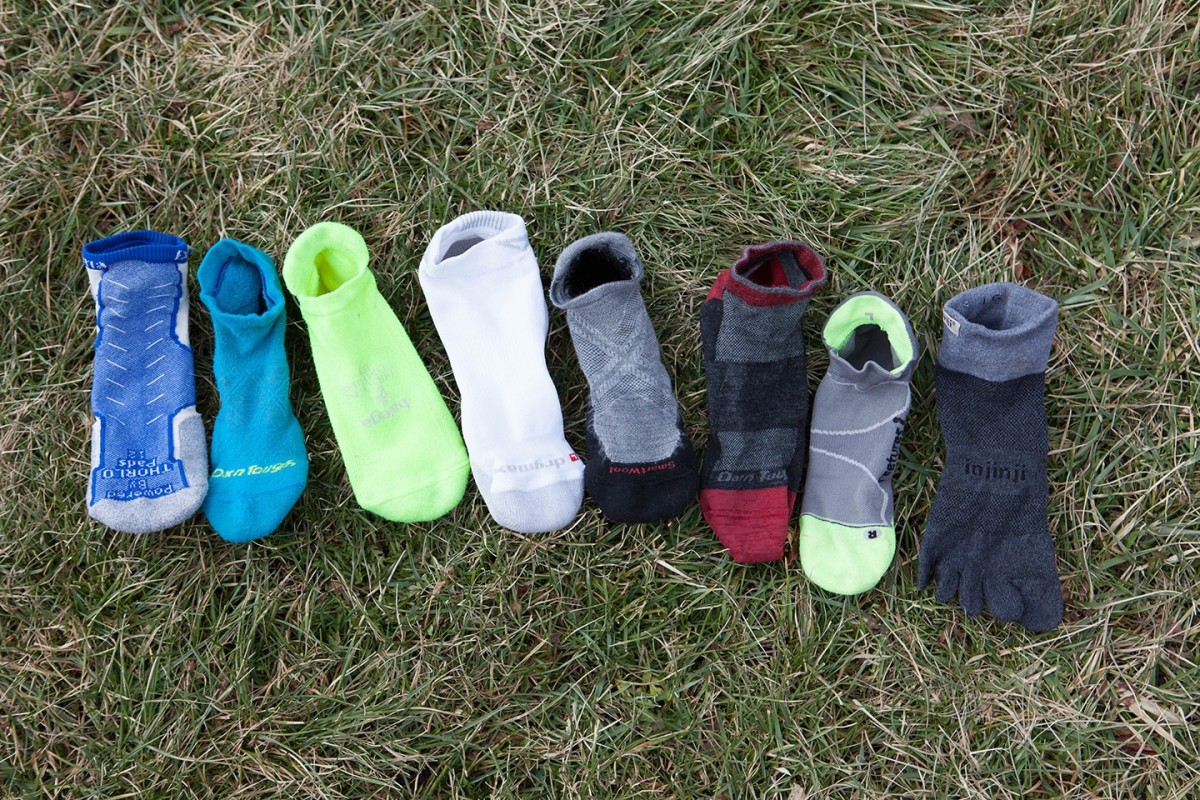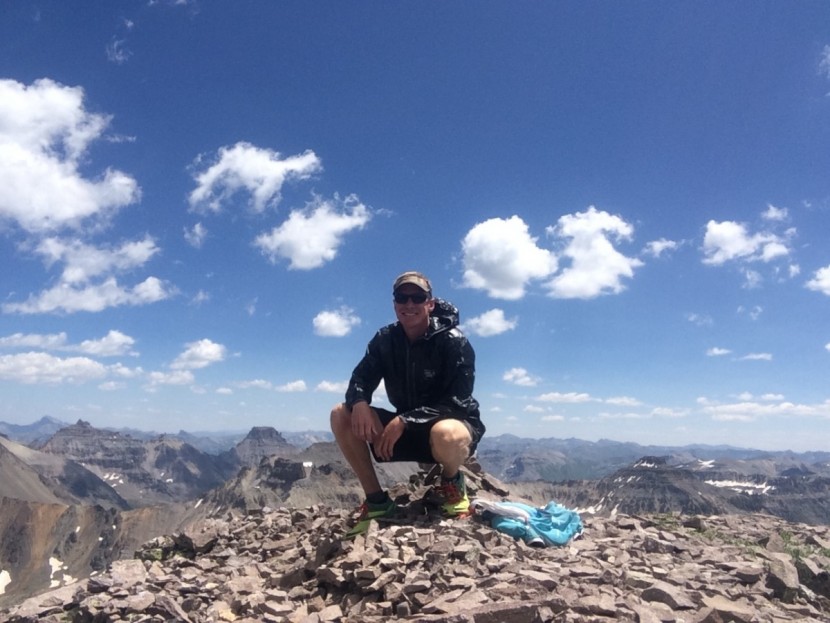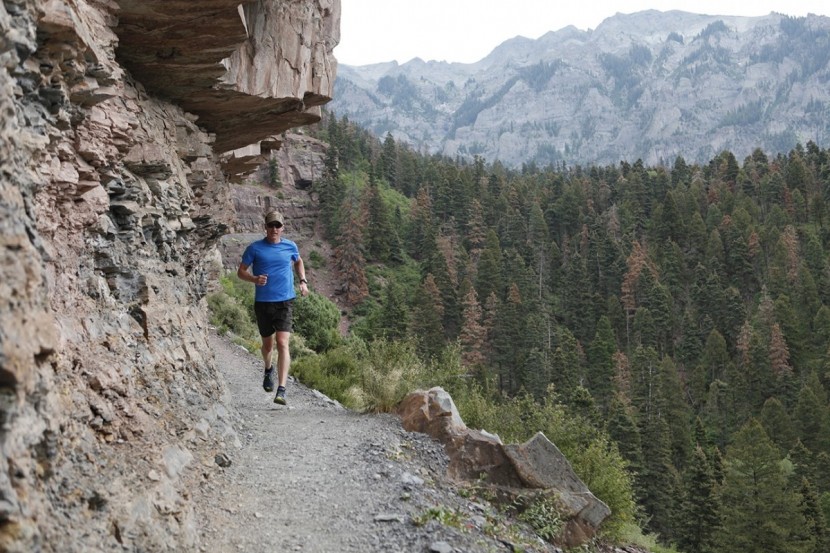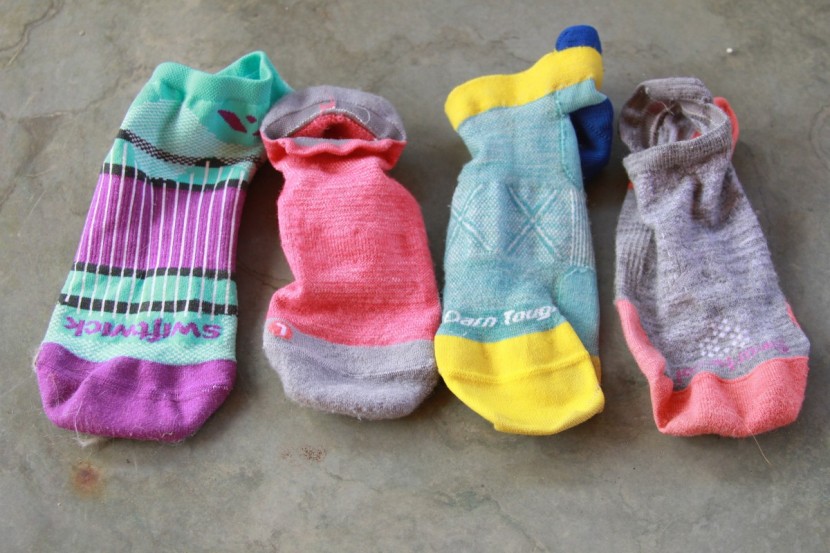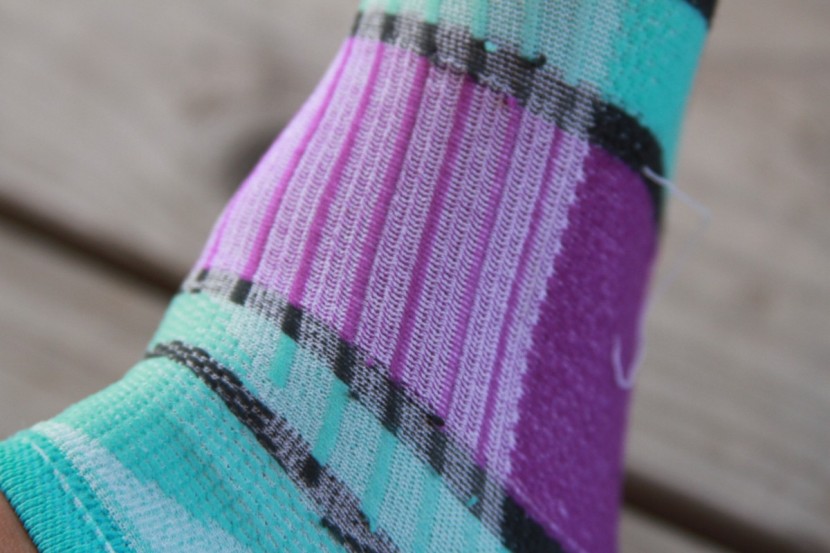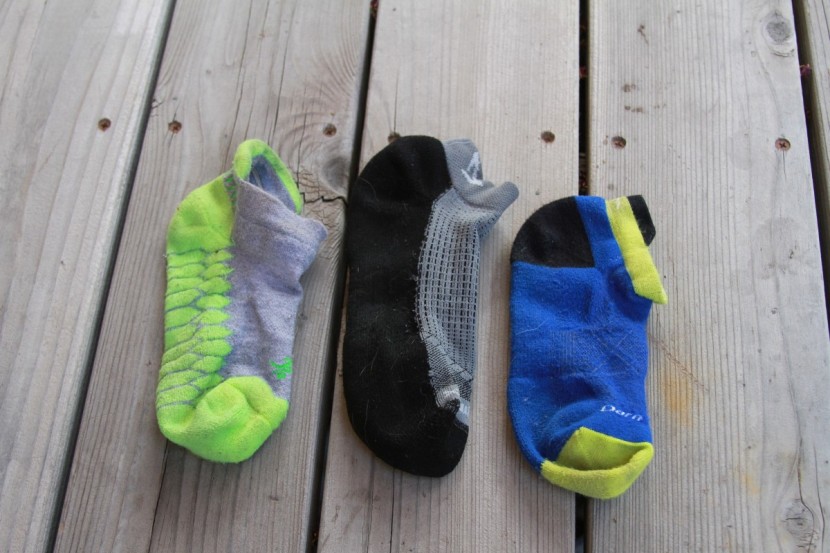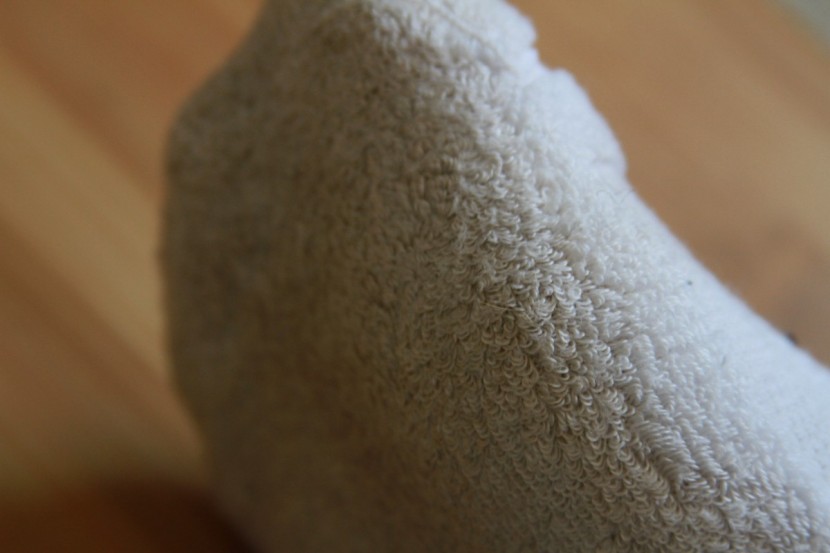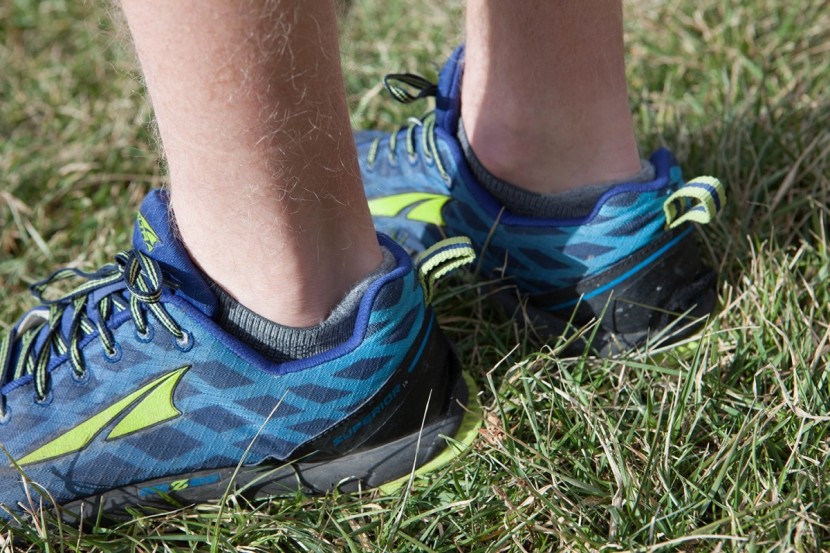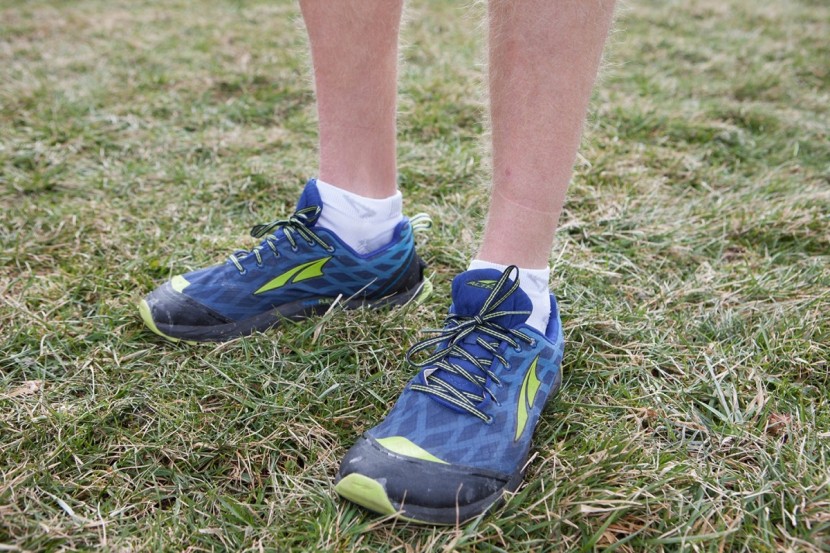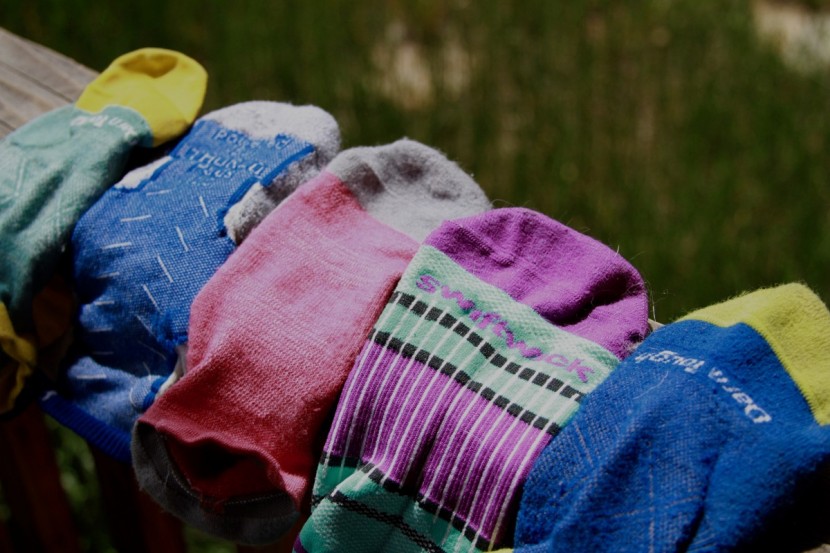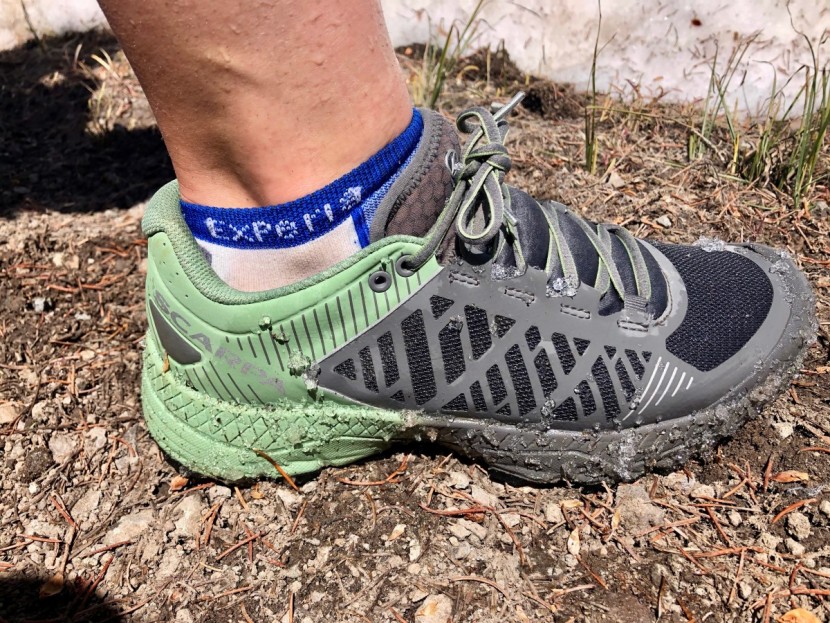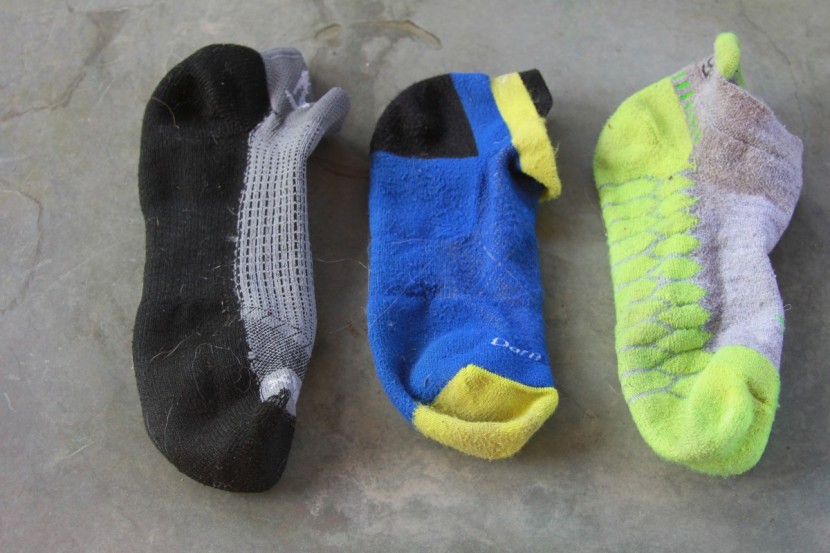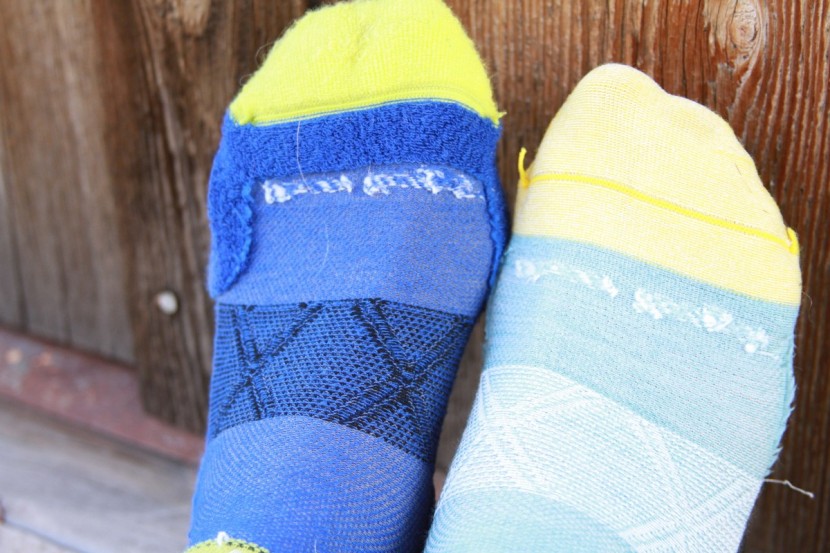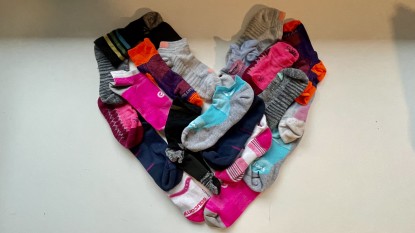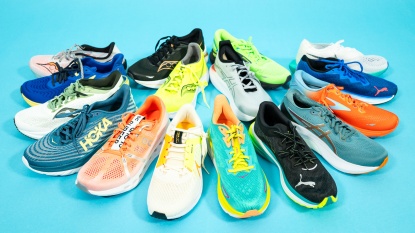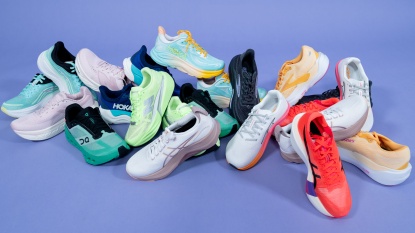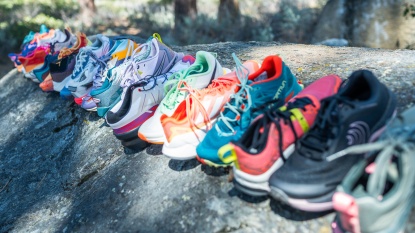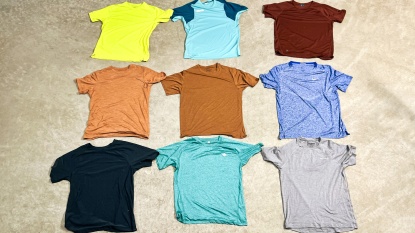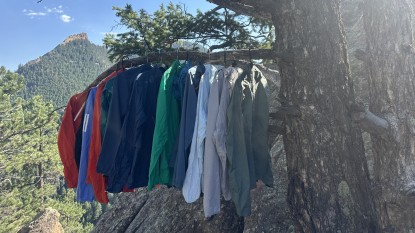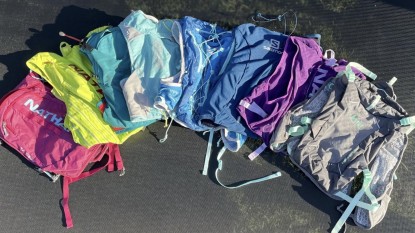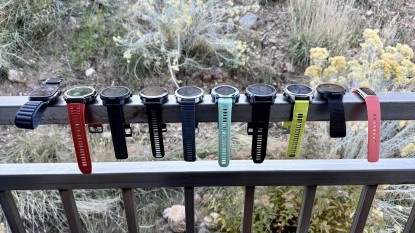How do you best choose which pair of running socks to buy? After putting nine of the top-rated and most popular available on the market today to the test, we have a pretty good idea of what choices need to be made when selecting a running sock. Below, we break down the different choices one will need to make when choosing a running sock and give you an outline that may help your decision-making process.
Why Buy Running Socks?
Running is a simple activity: the only thing that you need is a good pair of shoes. But is that true? What about the socks that protect your foot from your shoe? The truth is that a good pair of socks is just as important as shoes when it comes to enjoying your run and wanting more. Not convinced? We suggest you talk to someone who has had their goal race derailed by blisters or foot issues, and ask them whether sock choice is something to be taken lightly.
We chose socks that were made out of different fiber combinations, with varying levels of padding, and different ankle heights. Socks play an incredibly important role in keeping your running feet happy, in ways that may not be immediately obvious. The two biggest enemies of a runner's foot are friction and moisture. Socks play a critical role in mitigating these potentially catastrophic obstructions.
It is worth noting that running socks are typically made by companies that make socks for all types of activities, not simply running. So, if you go to a company's website, you are likely going to encounter lots of other socks. For running, we prefer a sock that is thin, or at most medium thickness, and has a moderate amount of cushioning mapped into the most appropriate places. We prefer either no-show or mini crew as our ankle height for most terrain that doesn't require leg protection. If you want to check out longer and thicker sock options, take a gander at the link below.
Related: Best Hiking Socks
Types of Running Socks
A quick perusal of the running sock market will help you realize that there are many, many brands of running socks available to choose from. Below, we break down the differences in fabrics, thicknesses, padding, ankle cuts, and special features, so you have a better idea of what you are choosing when you select a running sock.
Thickness
Peruse the website of a running sock manufacturer, and you will likely notice that socks come in a surprising number of different thicknesses. These different levels are often described with variations of the words: ultra-light, light, light cushioning, medium weight, full cushioning, ultra-cushioned, etc. In general, when describing their socks, most manufacturers will be sure to tell you what the thickness of the fabric used throughout the sock is (e.g., light, ultra-light), as well as how much cushioning is to be found underneath the foot.
While there may be some circumstances or types of feet that warrant exceptions to our choices, we feel the most appropriate thicknesses for these socks are ultra-light, light, and medium. With that in mind, the selection of socks in this review is based on these three thicknesses.
Ultra-lightThese socks tend to be very thin and have no extra padding or cushioning. They are a great choice for running in the middle of summer or in sweltering temperatures where you need your foot to breathe and don't want your sock to trap in any extra heat. There are a few downsides to these socks, such as a total lack of padding and the fact that they are so thin that your favorite shoes may fit differently than when wearing a cushioned sock.
Light
This thickness makes up the majority of the socks that we tested and was also the thickness that we felt was the perfect combination for most running. These socks tend to use a combination of very thin and breathable fabrics on the top of the foot and throughout the arch, paired with padding and cushioning in the heel and forefoot/toes of the foot. In our opinion, this combination of fabrics provides the best of both worlds, managing heat and moisture with wicking and breathing fabrics, while also protecting the high-impact areas of the feet with extra padding. Most of the socks in this review fall into this category.
Medium or Midweight
A couple of the socks we reviewed are medium thickness. These types of socks have thicker fabric throughout the entire sock. Many companies claim that due to the physics involved in moisture transfer, these socks will keep your feet as cool as a light sock. However, to work in this manner, moisture transfer has to be continually happening from inside to outside of the sock. There is no doubt that these socks are warmer, and we prefer them for colder seasons or conditions. Some prefer them due to the extra protection and padding one gets from their added thickness.
Thick
We think that this thickness of socks is not really appropriate for running, and we have none in our selection.
Fabrics
All of the running socks in our review are made of a blend of fibers, typically some form of proprietary polyester, nylon, elastic, and sometimes wool. Each of these fiber types has its own set of positive and negative attributes, and the way in which they are blended gives the sock most of its performance-enhancing (or not) qualities. The particular blend of fabrics found in any given sock can be found on their website, and the percentages of every pair of socks are printed on the UPC label.
Polyester
The first “ingredient” listed on many pairs is some form of polyester. Many of these polyesters are proprietary blends that are designed to be better at moisture control and wicking. Some of the names you may see in this review are Coolmax, Thor-wick Cool, and Drynamix. Polyester is a synthetic fiber that is primarily made from oil and solidified and woven into fibers. Compared to nylon, it is more hydrophobic, meaning it does not absorb water as well, a very beneficial attribute for running socks. However, it is not as durable or reliable as nylon, which is why it is often blended to make socks.
NylonNylon is another synthetic fabric that is known for its incredible durability and strength. It is found in every single pair of running socks that we reviewed here, and is usually the second most prevalent fabric. It is blended with polyesters to add strength and durability, as well as stretchiness. However, nylon is known for absorbing water much more easily than polyester, which is why none of these socks are made from nylon. A perfect blend of these two materials will provide strength, durability, stretchiness, and moisture-wicking abilities.
Elastic/SpandexElastic and Lycra Spandex are proprietary names for stretchy rubber fibers. They are blended into running socks in tiny percentages, typically in the 1-6% range. They add both stretchiness and support, and are responsible for the constricting and hugging action that takes place most frequently underneath the arch of the foot. The downside of these fibers is that they dry out and break easily, which is why elastic areas of clothing, such as compression socks or the waistbands of running shorts, tend to end up entirely stretched out well before the rest of the garment has broken down.
Merino WoolMerino wool comes from the Merino sheep and is much softer and more comfortable against the skin than the version of wool that usually comes to mind when remembering an old, itchy sweater. Merino wool is used in place of polyester in a few of the socks that we tested, the Smartwool PhD Run Light Elite Micro and the Darn Tough No Show Ultra Light. The advantages of wool are that it effectively wicks moisture in a liquid state, and also breathes very well if moisture is in a vapor state. Its ability to breathe means it is versatile in both hot and cold climates. Some people also like it because it is a natural fiber, rather than purely synthetic (although in the case of running socks, it is still blended with synthetic fibers). The downsides of merino wool are that it is more expensive than polyester, and it is not quite as durable.
OlefinOlefin fibers are a highly hydrophobic fiber that is found in socks that do a great job of wicking and breathing. They are a synthetic polymer fiber, known for their excellent bulk-to-weight ratio, meaning they are a good insulator for low weight.
Padding and Cushioning
Padding and cushioning serve a few important purposes in running socks. They provide a barrier between your foot and the shoe, lessening the effects of repeated stress on the sensitive tissues of the foot. While the small pads and cushions do little to reduce the impact of running itself, they usually do an adequate job of mitigating rubbing and chafing within the shoe that can eventually lead to blisters. The looped fibers that make up the padding are most often polyester or wool fibers that are designed to wick moisture from next to the foot to outside the sock. Lastly, padding can help a shoe fit better by filling extra volume within the shoe.
Most of the running socks that are available on the market today, and in this test, have some amount of padding or cushioning. In our opinion, the best designs are those that pair a very light thickness sock with targeted or mapped cushioning in the areas of highest wear and abrasion — under the forefoot, the toes, on the sides of big and pinky toes, and all around the heel, including the Achilles tendon. Some socks are not as detail-oriented in their padding locations, and simply pad the entire underside of the foot, or in some cases, fail to cushion all of the necessary areas. When trying on and purchasing running shoes, it is essential to wear the type of socks that you intend to run in for the best fit. If you want to wear a padded sock while running, then be sure to wear one at the shoe store.
Sock Height
Most socks come in a variety of ankle cuts, and here we highlight the pros and cons of the most common heights for running.
No Show, or No Show TabNo-show socks are designed to be very short and to be invisible when worn. This little tab is designed to prevent the back of the sock from slipping down within the shoe, over the heel, or in any manner that causes it not to fit as designed. Besides being the most fashionable, no-show socks are the sock of choice for most road runners. With the least amount of fabric covering skin, they are the coolest choice and also have the benefit of not creating tan lines on the lower leg. They are not typically an optimal choice for trail running because they tend to allow dirt and rocks to filter into the sock more easily.
Mini Crew
Mini Crew socks have an ankle cut that comes up just above the ankle bone, and no higher. They are often the most practical choice for trail running because they do a decent job of keeping out dirt and pebbles. They also provide much-needed protection for the skin of the ankles, which can get scuffed or cut up by trail obstacles or the other shoe on rough terrain. They have the downside of being warmer than no-show socks, and they leave a nice tan line across the lower leg.
Knee High
Knee-high socks are becoming more popular for running, generally in the form of compression socks. The benefit of knee-high compression socks is that they hug and support the calves and shins while running, supposedly increasing blood flow and reducing muscle fatigue and damage, especially over long distances. They are also helpful for protection while running through tall grasses.
Choosing the Best Running Sock
Now that we have fully discussed the various options that are available in running socks, we hope to give you some direction regarding the process for choosing the perfect sock for you.
Fit of the Shoe
If you are buying socks for a pair of shoes that you already own, then you will need to figure out what thickness of socks they are sized for. Different thickness socks take up different amounts of volume within a shoe, and the same shoe is not going to fit the same with a medium-thick sock compared to an ultra-light one. On the other hand, if you have a shoe that is a little too loose, you might try wearing a thicker sock, and vice versa.
The Sizing Chart
It also helps to look at individual sock makers' sizing charts before purchasing. Unfortunately, they are all different. Some manufacturers have very small size ranges, while others have vast ranges. For one brand of socks, your foot size might fall right in the middle, thereby giving you a perfect fit, while for others, you may be right on the edge, meaning that no matter what size sock you choose, it will be either too big or too small. If we fell right on the edge of a size range and didn't have the opportunity to try the sock on, we would probably decide to look at a different brand of socks, rather than stick to one brand and make do with a slightly mis-sized sock.
Men's vs. Women's Fit
There are many socks out there that are unisex, such as the Thorlos Experia, our Editors' Choice award winner. However, most companies do offer a women's specific fit. Based on our research and observation, a women's sock has a more narrow fit through the ball of the foot, around the arch, and around the heel. Just because you are a woman doesn't mean a women's fit will work for you. If you are blessed with wider feet, a men's sock may suffice for the fit. But if you're unsure, just order both and send back the one that works best for you. One of our main reviewers is a woman who prefers a men's fit (in some cases) to a men's sock simply because her foot is wider. If, however, you are a male with a more narrow foot, also consider ordering a women's sock if you know a men's one won't work for you.
Anatomical Fit
The Feetures Merino 10 running socks have an anatomical fit, meaning that the socks are designed for either a right or a left foot. To tell the difference and make sure you are putting the correct sock on the correct foot, there is a little “R” or “L” printed on the big toe area, or look for a difference in patterning.
Sock Care
Manufacturers have differing ideas about how to wash their socks. Some, especially ones made with wool, will need to be air dried to keep from shrinking. Other manufacturers suggest that you wash and dry them inside out to re-fluff up the padded portions. Pay attention and make a mental note about how to take care of your investment before you throw away the packaging.
No matter what, it's important to wash socks after each use. Dirt and sweat can be your greatest enemy when trying to prevent wear and blisters. The sweat and dirt will work to break down the fabric and keep the padding from staying soft. Dirty socks will not be able to breathe as well as clean ones, causing more moisture build-up, and the dirt can also cause added friction. If you are running long distances, it can be a good idea to bring an extra pair. It is very refreshing to put on a clean pair mid-race or run, and it can give you a boost or second wind.
Conclusion
We hope that this review has helped you in finding your next running sock. There is a vast selection, which means the one that works for you is absolutely out there. Using this review as a guide, we are here to help you with unbiased recommendations as always. Happy running!

